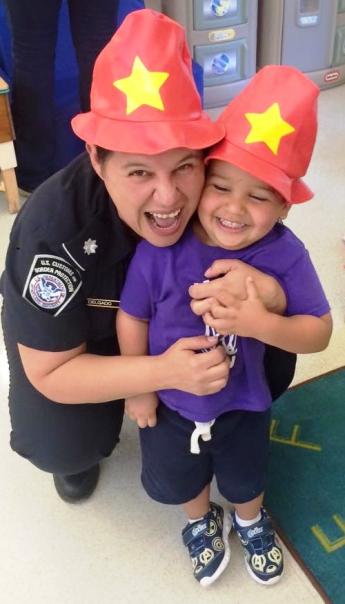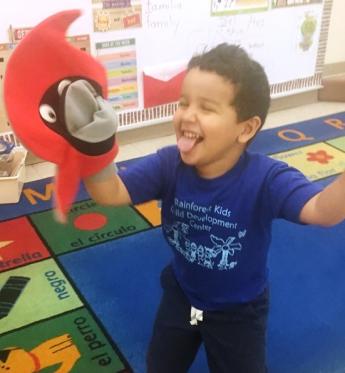GSA relies on partnership among people to respond and recover from 2017 Caribbean hurricanes
By Alison Kohler
This story is Part 3 in a series looking back on GSA’s response and recovery efforts in the 2017 Atlantic hurricane season. Read Part 1 about GSA’s initial response efforts to assess and reopen GSA leased and owned facilities and support our interagency partners in the whole community response and Part 2 about how GSA made progress in the recovery phase.
GSA prioritizes the protection of people above all other responsibilities in an impending disaster, which proved to be a sound approach to recover from the 2017 hurricanes in the Caribbean.

To ensure the safety and protection of employees and the federal family, all of GSA’s five owned facilities in the Caribbean closed except to essential personnel at noon Sept. 19 before Hurricane Maria’s landfall, according to procedures in the region’s hazardous weather plan.
“Our employees are the foundation of our response — without them, nothing can happen,” said Roy Crowe, deputy regional director and regional emergency coordinator, GSA’s Eastern Region.
One Caribbean-based GSA employee said his main concern turned to his home and family, and he used the time between the building closure and landfall to prepare for outages after the storm. “No one knew what was going to be the weakest link after the storm, so we tried to prepare for everything — cash, gas, water, or power. We did know, however, that it was going to be catastrophic,” said Edgar Hernandez, manager of GSA’s Caribbean Field Office.
Hernandez described how it sounded and felt inside what he said was his sturdy and well-constructed home during the storm.
“The air pressure was rocking things inside the house back and forth. Curtains, lamps, ceiling fans and doors, they all moved constantly. Water started to make its way in somehow through closed windows in areas that couldn’t be covered with shutters. At the beginning, my family was just surprised with the horizontal rain and its strength; then they got scared with the sound of things breaking, objects flying by, trees falling in the empty lot behind our home, and leaves, millions of them, flying horizontally through the wind. It felt like being inside a small tornado for 14 hours. We thought if this is happening to our concrete-built home, it would be catastrophic to the thousands of homes with less protection, and feared for the many lives that could be lost. After a few hours, we prayed together and tried to get some sleep,” Hernandez said.
After the storm cleared the area, GSA immediately began work to account for all staff members.
“Supporting our employees’ ability to get to work and assisting those facing calamity became a major focus of the region’s response,” Crowe said.
“It took me a couple of days before making it to the office. I needed to make sure my family was safe. We had no power, no water, no internet, no cell phone signal, no gas stations, and there were rumors of looters everywhere. We couldn’t communicate with anyone,” Hernandez said.
When the affected employees reported back to work after it was safe and they were able to, they found an unprecedented amount of damage to GSA’s owned and leased properties and significantly increased disaster-related workload.
One advantage to Region 2’s unique position of a geographically dispersed catchment area of New York, Northern New Jersey, Puerto Rico and the U.S. Virgin Islands was that unaffected regional employees stateside augmented the Caribbean-based employees with tasks that could be completed remotely, as well as to try to understand the affected employees’ situations and how to help them.
“I was overwhelmed by the show of support and affection with many concerned emails and calls from coworkers in the states. It really made our days; we knew that we weren’t alone. Some even asked us to travel to their homes for a few days or to send our children there,” Hernandez said.

Rios said she thought Hurricane Maria might just be a “strong storm” ahead of time, but afterward the magnitude of the damage went far beyond what she imagined. She said it helped to reassure herself that she was alive and had a house, to repeat in her mind “this too shall pass,” and she said each day she reached out to someone to see how she could help.
“I was fortunate to not only be able to assist on a personal level, but also through the work I do in GSA. Being a part of the recovery efforts in my mind is being a part of the solution,” said Jeannette Rios, branch chief of Caribbean and New Jersey Leasing. “The IRS asked me to pass on kudos to GSA for doing such a great job in keeping the customers informed. They commended the regional emergency operations center for their response time,” Rios said.
“We as a family were affected by the urban flooding and ocean surge in Levittown (Puerto Rico). My child had to flee with us to the roof at midnight to avoid the waters rising. I am a law enforcement officer, and I am considered essential personnel. Having reliable child care was my main preoccupation. When I went back to get my child after work, my 3-year-old was with his friend and teachers blowing bubbles and running after them. It was a scene that was pretty common before the storm; however, after seeing so much devastation, it was hard for me to hold back tears of joy,” said Luz H. Delgado, program manager for U.S. Customs and Border Protection in San Juan.
This is the last in a series of stories looking back on the 2017 Atlantic hurricane season.

 U.S. General Services Administration
U.S. General Services Administration